Cosmetic Dentistry
Restore your smile with Dental Implants
Would you like to restore your ability to SMILE, SPEAK and EAT with comfort and confidence?
If you’ve lost one or more teeth due to injury, trauma or decay, and you’ve lost your confidence to smile or feel your teeth are holding you back, there’s no need to panic as Dental implants can help.
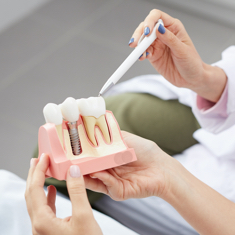
Straighten your teeth discreetly with Invisalign
Invisalign is a state-of-the-art alternative to braces that is practically undetectable to other people. Teeth can grow into crooked positions or sometimes become more overlapped or crowded with time. As well as a poor smile, crooked teeth can affect the health of teeth, gums, gums and jaw joints, particularly as they are more difficult to clean around.
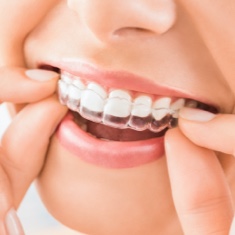
Get the perfect smile for your Wedding Day
At Bridge Dental Clinic, we believe looking great goes further than solely your outfit, hair and makeup though. As one of the happiest days of your life that is sure to have all parties involved smiling ear to ear, we understand the importance of having teeth that you’re proud to show off.

Transform your smile with Dental Veneers
Dental veneers are wafer thin porcelain laminates which can be fitted over the surface of teeth, to dramatically improve the appearance of imperfections. Veneers provide a natural appearance and function as a normal tooth when you bite or chew.
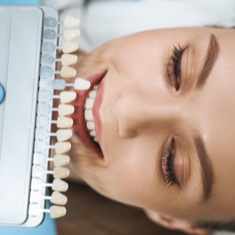
Brighten your smile with Teeth Whitening
Teeth whitening works by applying a small amount of bleaching gel to the teeth. The gel then reacts with the surface of the tooth, gently removing stains and creating a beautiful, pearly white smile to be proud of.
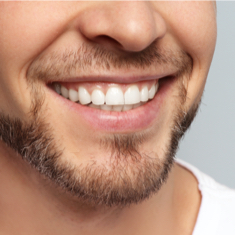
Replace your old silver fillings with White Fillings
White fillings are a natural-looking alternative to the traditional, silver amalgam fillings you may have been familiar with in the past. They are made from tooth-coloured composite resin designed to blend beautifully with your natural teeth. Here at Bridge Dental Clinic, we can use white fillings to replace old silver fillings, so you can smile with total confidence.
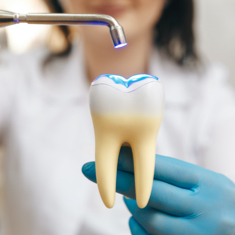
Perfect your smile with Composite Bonding
Teeth bonding, also known as dental bonding, involves the use of tooth-coloured resin to repair chipped, discoloured, fractured or decayed teeth. The treatment is so-called because the material is ‘bonded’ to your teeth.
Make sure you have your perfect smile with teeth bonding. Talk to our experienced consultants for free today!
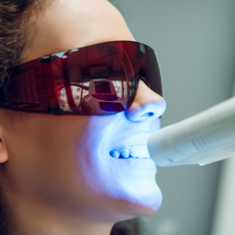
Tackle stubborn stains with the Airflow
Air-Flow is a professional, biofilm and stain removal system that tackles stubborn stains, which are difficult to remove with normal teeth whitening methods.
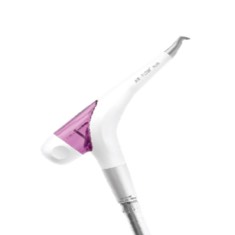
Book Your Free Consultation
If you’re thinking about having Cosmetic Dentistry, you probably have lots of questions. Talking to someone who has seen the process from start to finish can really help.









